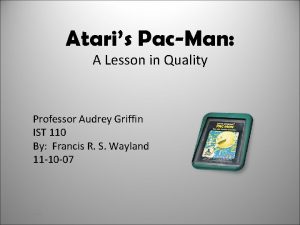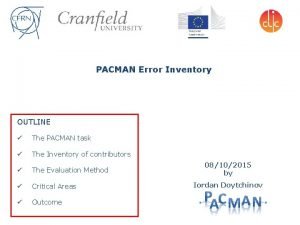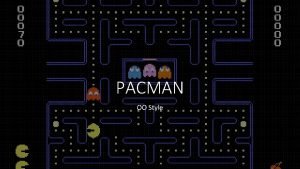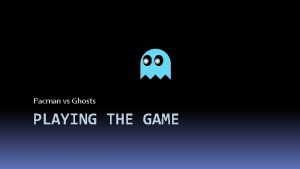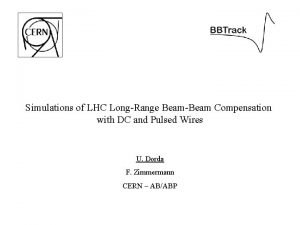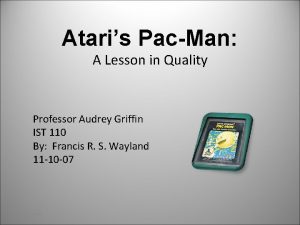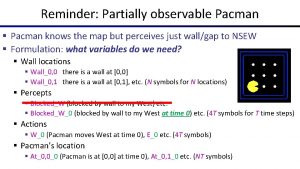Ataris PacMan A Lesson in Quality Professor Audrey











- Slides: 11

Atari’s Pac-Man: A Lesson in Quality Professor Audrey Griffin IST 110 By: Francis R. S. Wayland 11 -10 -07 11/10/2007 1

Objectives: Atari – a pioneer in arcade games, home video game consoles, Ø and home computers. Pac-Man (Atari 2600) Ø 11/10/2007 o Why Pac-Man (Atari 2600) failed. o What Atari could have done differently. 2

Atari The original Atari Inc. was founded in 1972 by Nolan Bushnell and Ted Dabney. It was a pioneer in arcade games, home video game consoles, and home computers. The company's products, such as Pong and the Atari 2600 (left, ) helped define the computer entertainment industry from the 1970 s to the mid 1980 s. 11/10/2007 3

(Original) Pac-Man Graphics Pac-Man is a Japanese arcade game originally developed by Namco (now Bandai Namco) and licensed for distribution in the U. S. by Midway, first released in Japan on May 22, 1980. Immensely popular in the United States from its original release to the present day, Pac-Man is universally considered as one of the classics of the medium, virtually synonymous with video games, and an icon of 1980 s popular culture. Upon its release, the game became a social phenomenon that sold a bevy of merchandise and also inspired an animated television series and a Top 40 pop single. 11/10/2007 4

(Original) Pac-Man Sounds Click the speaker to hear it’s sound Ready! 11/10/2007 Intermission Eating Dots Eating Ghost Eating Fruit Extra Life Death 5

The home version of the highly popular Pac-Man arcade game was eagerly anticipated, but was an incredible failure. In 1982, Atari created twelve million cartridges in hopes of the game boosting system sales. Atari did sell close to seven million cartridges, but consumers and critics alike gave it low ratings. The Atari 2600 Pac-Man only somewhat resembled the original, and its flickering ghosts were widely criticized. The game was rushed to make the 1982 Christmas season. The high number of unsold units (over five million), coupled with the expense of a large marketing campaign, led to large losses for Atari. This game, along with E. T. , is often blamed for sparking the video game crash of 1983. Shortly after the disappointment of Pac -Man, Atari reported a huge quarterly loss, prompting parent company Warner Communications to sell the division off in 1984. Atari never regained a prominent position in the home console market, as Nintendo and Sega, and later Sony and Microsoft, rose to become the chief players in a market that Atari once dominated. 11/10/2007 6

(Atari) Pac-Man Sounds Click the speaker to hear it’s sound Opening Tune Death (Note the difference in structure and quality. ) 11/10/2007 7

Highlights of Atari’s Pac-Man (2600): 11/10/2007 Developer Tod Frye (Atari) Publisher Atari Released 1982 Genre Maze Mode(s) Single-player, twoplayer alternating Platform(s) Atari 2600 8

Atari Pac-Man Cartridges Sold / Unsold 11/10/2007 9

Conclusion: While the unfaithfulness of this game version is often attributed to the hardware limitations of the Atari 2600, Atari's own subsequent 2600 release of Ms. Pac-Man, as well as several more recent “homebrew versions” using the same hardware, proved that the version could have been considerably more faithful. The main reasons are the game’s very rushed development and Atari’s insistence on a cheaper 4 kb ROM chip instead of bankswitched 8 kb (the Atari 2600 can only access 4 Kb of ROM at a time). These two things were within Atari’s control. The company could have allotted more time, or people, for the project. They also could have devoted more of their resources to the 8 kb ROM rather than an enormous marketing campaign. 11/10/2007 10

Bibliography: • • • http: //en. wikipedia. org/wiki/Atari_2600 http: //en. wikipedia. org/wiki/Pac-Man_%28 Atari_2600%29 http: //en. wikipedia. org/wiki/List_of_commercial_failures_in_video_gaming http: //en. wikipedia. org/wiki/Pac-Man#Atari_2600_port http: //pac-man. classicgaming. gamespy. com/Sounds/ 11/10/2007 11
